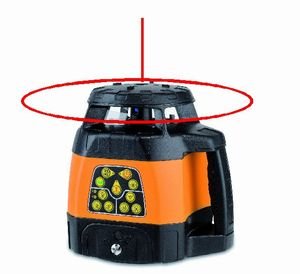 Laser levels are becoming increasingly used across a whole host of industries, from engineering to landscape gardening. In this guide we look at some of the wide and varied types and uses for laser levels and why they have become so popular.
Laser levels are becoming increasingly used across a whole host of industries, from engineering to landscape gardening. In this guide we look at some of the wide and varied types and uses for laser levels and why they have become so popular.
The uses of laser levels
Laser levels can generally be used in either an outdoor or indoor environment (although in some of the more advanced models you may find that they can be used in both).
For indoor use they are mostly used for wall alignment, checking the level of the floor and ensuring that kitchen fixtures such as cabinets are level. For outdoor use they are frequently employed to check the levelling of fencing and decking as well as ensuring that garden constructions are level. The most advanced of laser levels will be used in major construction works to ensure that building dimensions are millimeter precise.
The main features
Most laser levels will feature one of three types of laser technology: dot lasers, line lasers and rotary lasers. Dot lasers highlight a number of dots along a wall and are used in cases where the distance is pretty short between the laser and the construction. Line lasers are used where the tool is used indoors at less than 150 feet. Finally rotary lasers are the type that produces lines of light that rotate. These lasers are generally used where the distance is more than 200 feet.
The different types of laser levels
There are two assortments of lasers, those that are manually adjusted and those that are self-levelling. The former of which involves the operator adjusting a traditional bubble leveler in order to ensure accurate results. The latter of which are far more advanced, and are designed to automatically adjust themselves to an exact angle. The operator does however need to set the laser to what they think of as being level (the laser will then do the rest). These types of lasers will continually monitor their position, meaning that heavy footsteps or slight knocks will see the tool re-evaluating its position and resetting itself.
The advantages of using laser levels
There over plenty of advantages to using laser levels as a preference to bubble levels. For a start they can be used with a tripod or other tool to provide convenient hands free operation (which is essential when being used for certain purposes). Additionally they can also enable the operator to work more efficiently and accurately, particularly as a bubble level is prone to plenty of human errors. Additionally laser levels obviously offer the option of measuring over a long distance, as opposed to being right next to a construction, as well as this the more advanced of lasers can even project around corners.
The Laser Level Shop have the widest range of lasers in the UK to date. Their items are all carefully selected to ensure the highest quality of item at the most reasonable of prices. From engineering lasers to simple angle lasers for use in the garden, they stock every laser, perfect for practically every use imaginable.
